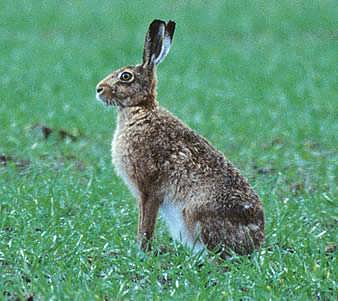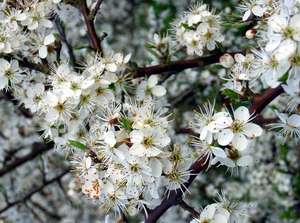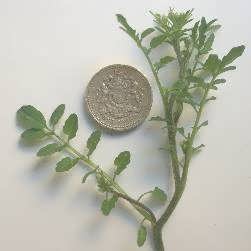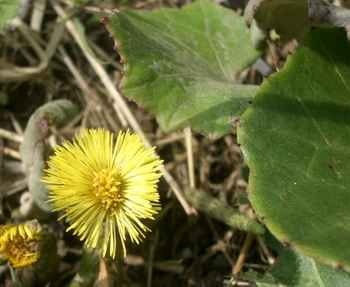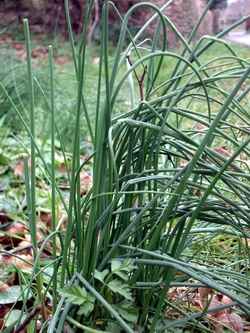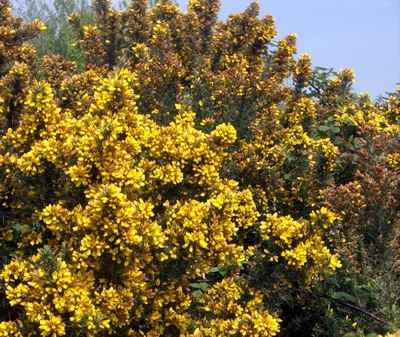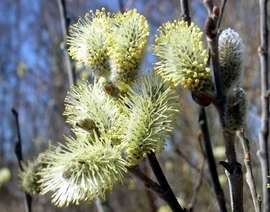When to Watch Wildlife |
J | F | M | A | M | J | J | A | S | O | N | D | Search |
Current wildlife highlights |
||
|
What's new on this site |
||
|
Wildlife calendar |
||
|
Plants and Animals |
||
|
Habitats |
||
|
Wildlife sites |
||
|
WWW links |
||
|
Guide Books |
||
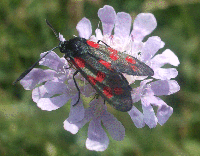 |
||
|
© PMcS 2006 |
|
March |
||||||||||||
|
||||||||||||
|
This month look out for:
|
||||||||||||
| Although there can
be warm days, March can often remain in the grip of the winter weather.
However it is impossible not to feel the mounting anticipation of Spring
and notice the new emergent life. As the nights get longer, and at
last the clocks change ("spring forward"), there is a renewed optimism
for the new season ahead. This month is famous for mad-March-hares which are in fact the female hares resisting the optimistic advances of amorous males! With the arable crops still short, where hares can often be seen feeding, this is a good time of year to spot these beautiful and charismatic native animals. The earliest of the summer bird migrants start to arrive. The wheatear is amongst the first to arrive. Another bird returning at this time is the chiff-chaff with its repetitive and distinctive song. The chiff-chaff is a small green warbler found in woodlands and scrubby areas. In the woodland the ground is green with shoots and many woodland plant species are starting to come into flower. Early lesser celandines have already shown their yellow petals to the sun, however when its dull the flowers remain closed. Other woodland species such as the wood anemone, town hall clock and the sweet violet, with its small purple flowers, also appear. If you are lucky you may find the large and extravagant looking stinking hellebore, with its smelly green and red flowers. Dog's mercury, and ramsons where the ground is damp, can totally carpet the woodland floor with a sea of fresh green leaves.
In the hedgerows towards the end of the month the blackthorn (also known as sloe) flowers. Bushes are covered in clouds of white blossom borne on its dark, thorn laden branches. This shrub is sometimes confused with hawthorn, but the hawthorn does not flower until May and comes into leaf before the blossom opens. A sure sign of spring are the furry looking catkins of the 'pussy' willow, found in damp places. |
||||||||||||
| Habitats and species |
||||||||||||
|
Parks and gardens: The mounting bird chorus can even wake you in the
morning if you live in the suburbs. To help workout which bird is
singing go to the
bird song page. Along the edges of paths and at the foot of shady walls, the diminutive wavy bittercress can be found in small bushy rosettes with white flowers. The first round and shiny leaves of Jack-by-the-hedge (or garlic mustard) start emerging at this time at the foot of walls and hedgerows.
wavy bittercress On some stone walls the ivy-leaved toadflax is starting to
sprout. It quickly forms large hanging clumps with its fleshy, ivy
like leaves. It later supports multiple miniature mauve and yellow
snapdragon type flowers. |
||||||||||||
|
Woodlands
(including wood pasture): See introduction above.
In some woodlands if you are lucky you may find clumps of the truly wild
wild daffodil. Its yellow trumpet flowers are delicate and small,
but look stunning in their natural woodland setting. |
||||||||||||
|
Arable and hedgerows: Skylarks may be heard from
January onwards singing their hearts out over arable. They sing
whist in mid air often seemingly aiming for the clouds! Lapwings
(also known as peewits) start to establish territories over
arable farm land in March. They have a swirling, tumbling display
dropping from the sky only to rise up again at the last minute, whilst
calling 'peewit' . Their normal flight is rather laboured and
'floppy', with black wing tips obvious against the white body. |
||||||||||||
Road verges: The road verges are greening up again, as the fresh new
grass growth replaces the dirty winter herbage. Patches of the
rather odd looking coltsfoot spring up in hedgerows at this time.
It has a yellow daisy like flower on a thick stem and round, furry
leaves. White and red dead nettle are also starting
to flower. One easily missed plant emerging at this time of year is chives.
Wild chives grow in straggly clumps, often in amongst grass
stems.
|
||||||||||||
|
Chalk and limestone grasslands: |
||||||||||||
|
Meadows (neutral) and flood plain grasslands: |
||||||||||||
|
Acidic grasslands: |
||||||||||||
Heathlands:
On heathland gorse bears its bright yellow flowers and attracts
early insects.
|
||||||||||||
|
Mountain and Moorlands (uplands): |
||||||||||||
Rivers
and ponds (including bogs and mires): The pussy willow
(below), which is so synonymous with spring, can be seen with its
bursting catkins in March, particularly in wet areas. The catkins
are male pollen bearing flowers which offer up their pollen to the wind
to seek our female flowers. The pussy willow is actually usually
a name given to the goat willow.
|
||||||||||||
|
Sea
and the sea shore (including estuaries): The sea bird colonies are
reassembling. Gannets chose their patch of rock amongst
their neighbours on which to raise their single offspring in the
forthcoming summer. Bass Rock is a famous gannet breeding
site. |
||||||||||||
|
Mammals: In
March and April bats emerge from their winter hibernation, to hunt out
flying insects on which they feed. In towns the small
pipistrelle is the most common species. Bats are very
particular in their hibernating sites requiring a stable temperature and
humidity. |
||||||||||||
|
Birds: As more
summer migrants arrive in late March, the woodland dawn chorus will
swell. However the resident birds are already in full song
proclaiming their territories to all comers. Song thrushes,
blackbird, greenfinch, great tit and robin
are amongst the most noticeable of these. This is therefore a good
time to start learning bird song of the more common species, before the
summer migrants get in on the act. Towards the end of the month the
likelihood of seeing summer migrants in number starts to grow. You
may be lucky enough to see a swallow swooping over fields.
However the old saying of "one swallow does not a summer make" is
never truer. The weather can turn cold again and quickly
disappoint! |
||||||||||||
Amphibians & Reptiles: Toads start to emerge from their
wintering hiding places and move towards their chosen breeding ponds.
The frogs are mating with vigour, having risen from the pond
bottom where they spent the winter. The amorous males cling on to
the females for dear life in large numbers. It is surprising that
the females can survive. They are all trying to ensure that the
eggs laid are fertilised by them. The adults stay in the pond
until the weather is warmer in April. |
||||||||||||
|
Insects: The
first butterfly of the year to emerge from hibernation is the beautiful
lemon yellow male and greenish white female brimstone. It
is possible that the word butterfly is derived from the yellow butter
colour of this species - who knows? The adult is an important
pollinator of the yellow primroses flowering at this time,
whereas its caterpillars feed only on buckthorn. Bumble bees
start to emerge and can be seen buzzing around on the warmer days.
Ladybirds also start to appear from their communal hibernation
nooks and crannies. |
||||||||||||
|
Plants:
Woodlands offer the most interesting places to visit for early flowering
plants. |
||||||||||||
| Fungi | ||||||||||||
All images and text are copyright PMcS 2006
